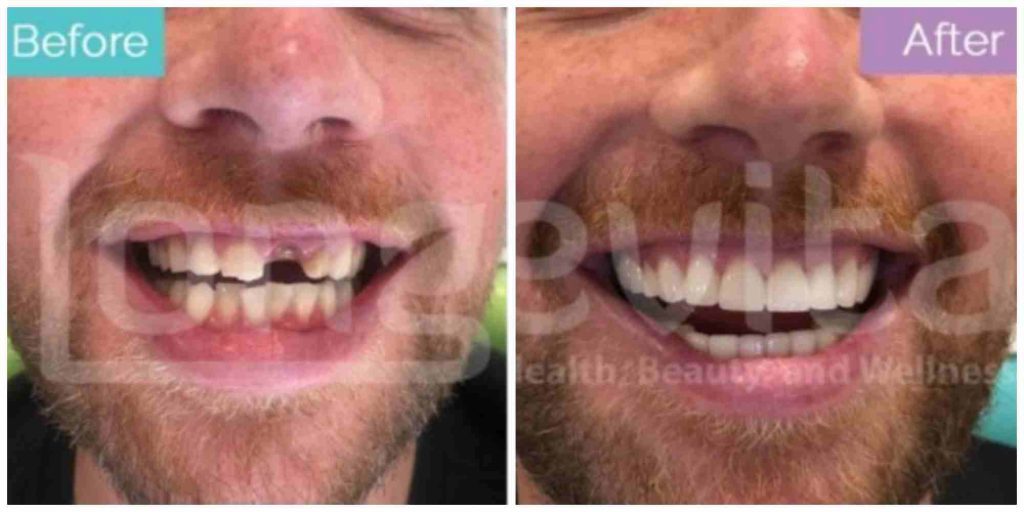In the world of cosmetic dentistry, dental bonding is one of those treatments that simply seems too good to be true. Getting a smile makeover in less than an hour and for such a low price isn’t something you see every day. But that’s precisely why so many people end up choosing bonding over other cosmetic and restorative treatments.
Keep in mind that composite bonding uses tooth-coloured resin to sculpt over the problem areas of the teeth. It is then hardened and polished. However, the problem is that teeth bonding has its disadvantages. It’s not that it’s up to no good, only that it has certain limitations you should know about before you make a decision.
What Are The Disadvantages Of Teeth Bonding?
Here’s what you should know about composite bonding:
It’s Not As Durable
One of the biggest drawbacks of dental bonding is that it’s not as durable as crowns or veneers. Unlike them, it’s not made of porcelain. In fact, it uses composite resin, which is even weaker than the natural enamel of the tooth. As a result, it can chip or break quite easily. Ideally, they should last between two and three years, but many people end up chipping them before that.
The risk of that happening is even greater if you’re in the habit of using your teeth like tools (for opening packages, bottles or cutting tapes). Or if you chew pencils or pens or bite your nails. By that token, if you eat hard, crunchy foods like nuts, carrots or ice, you could again expect the bonding material to snap.
Additionally, if you have teeth grinding disorder, known as bruxism, you’re going to end up breaking the bonding material before you even know it. If it doesn’t break, it’ll definitely wear off quite quickly, which will make your teeth uneven.
It Will Stain Easily
Teeth staining can easily ruin the result of cosmetic dental treatment. And the material composition of dental bonding makes it impossible for it to not stain. Since composite resin is porous, food colours easily settle into it. This is, again, unlike crowns and veneers, which simply retain their original colour, no matter what.
If you have composite bonding and eat staining foods, the bonding material will become far more noticeable than the surrounding teeth. This is every time you consume foods like:
- Cherries/berries
- Coffee
- Tea
- Curry
- Ketchup
- Red wine
- Beets
- Cola
- Soy sauce
Either you can consider avoiding these foods altogether or choose another dental restoration because the bonding material will stain. The same can happen if you smoke. And once the bonding material becomes darker or more noticeable, it will no longer be discrete or natural-looking. Because it will look different from the rest of your teeth, it will be obvious to anyone that you had your teeth bonded.
Keep in mind that dentists use a shade guide to match the colour of the composite resin with your natural teeth. So, initially, they’ll look quite good. But because of the very nature of the bonding material, the results can become less than satisfactory.
It Will Not Give Dramatic Results
Composite resin is best used to fix minor dental problems. A small amount of composite resin covers or camouflages only a portion of a tooth. The material is not used to create complete artificial teeth, such as veneers and crowns. So, the results are not that dramatic, especially if your existing teeth are severely damaged.
Composite resin alone will not be enough if there are large gaps between your teeth or they’re badly cracked or chipped. It also won’t help if the teeth are too stained. In all these scenarios, you should seek more durable dental restorations as the results of composite resin will not be satisfactory.
Does Composite Bonding Ruin Your Teeth?
Composite bonding is a reversible dental procedure that does not require any tooth prepping. It will not ruin your teeth in any way. For this treatment, the tooth will be etched with acid to roughen up its surface so that the bonding material sticks. But it will damage your tooth enamel. It’s practically risk-free (although contact dermatitis has been reported in some patients).
However, in general, composite bonding will not affect your overall oral health. On your end, you need to make sure that you take care of your teeth by brushing, flossing and using mouthwash. That’s because it’s possible for the tooth underneath the composite bonding to decay as a result of poor oral hygiene.
When Is Composite Bonding A Good Choice?
Cons of composite bonding aside, it can actually be quite helpful in some cases. For instance, composite bonding is the better choice for fixing minor problems like hairline cracks on teeth (craze lines), small gaps or chips. That’s because it preserves the structure of the natural tooth.
Many people also prefer composite fillings over silver amalgam fillings due to their aesthetically unappealing appearance. This is especially true if you need a filling near the front of the mouth.

Lastly, patients with exposed tooth roots (due to gum disease, tooth grinding, aggressive brushing, etc.) can also benefit from composite bonding. Keep in mind that when the tooth roots are exposed, you can experience significant pain and sensitivity. Composite bonding can cover the exposed roots and help you manage these symptoms.
How Does Composite Bonding Compare To Crowns & Veneers?
If it’s about cost and convenience for you, composite bonding won’t disappoint. That’s because it will cost less than £100 per tooth, and you’ll only need to visit the dentist once. But considering its poor durability, you’re going to be visiting your dentist quite often.
If you end up with any sharp edges, reshaping the bonding material would be enough. However, if it’s significantly worn, you’ll need a new dental bonding. So, in the long run, it might not be that cost-effective or convenient. Keep in mind that composite bonding is not available on the NHS or private insurance, so you’ll have to get it privately every time it breaks.
On the other hand, if you’re looking for aesthetically pleasing results along with durability, crowns and veneers fare far better. It might be a little less convenient, considering you’d need multiple appointments. But once they’re fitted, these restorations can stay with you for more than a decade.

Conclusion
While composite bonding is a quick, cheap and easy way to fix minor problems with your smile, keep in mind that it has its shortcomings. The durability of dental bonding is one issue, but the other is that it can stain very easily. Therefore, it is not the best option for changing a smile’s aesthetics dramatically.
Composite bonding can still be quite useful in certain cases. But make sure to discuss its pros and cons with your dentist before you decide on this treatment. You can check the before and after pictures of other patients and maybe even consider talking to them to learn more about their experience.
